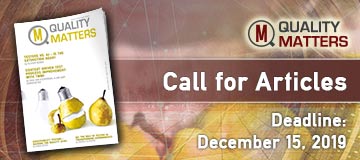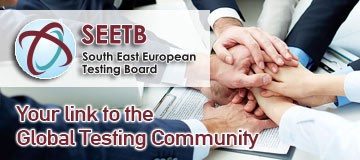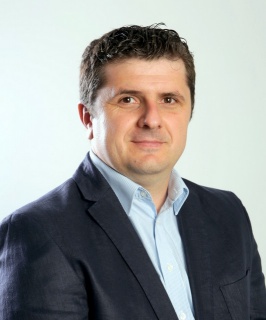
Mircea Ioan Pop
NXP Semiconductors, RomaniaMircea has more than 14 years’ experience in embedded software, system testing and bench marking solutions with NXP Semiconductors and expertise in the following domain areas: Networking Applications, Security Subsystems and Wireless infrastructure. He has lead the development ofa series of custom testing frameworks targeted for Networking and Security test automation and managed the CAPEX and roadmap implementation for networking BoardFarm,in order to meet R&D specific project requests. Mircea has ISTQB certification and an evangelized Agile project tracking approach within development and testing teams. He has been a two-times session speaker at previous SEETEST conferences.Currently he‘s managing the bench marking and testing activities for NXP IMX NPU platforms(IMX Series) targeting security functionalities for multimedia and automotive infotainment scenarios.
Testing challenges and solutions for Embedded Software running on large scale product portfolio
Testing challenges and solutions in embedded software targeting Large Scale embedded product portfolios,having similar hardware IP blocks and common software frameworks.
The presentation is focused on the testing challenges that came along with Hardware IP Block integration in NXP large scale embedded portfolio. A brief description of NXP Networking and Multimedia platforms is made,highlighting the cross software platform challenges.
The presentation showcases the software commonalities and differences that come along with hardware IP integration in various embedded platforms, having a high focus on opensource software integration like: Linux, Android, Yocto, Ubuntu… Testing solutions, testing approaches and test case management used in day to day activities is presented,highlighting the benefits of test case reuse, common hardware lab systems test solution sharing.
Never the less impact upon software quality, operation
al and capital expenses is presented to highlight the advantages of testing solutions integrated in our labs.

Peter Varhol & Gerie Owen
Technology Strategy Research, Cubic, USAPeter Varhol is a well-known writer and speaker on software and technology topics, having authored dozens of articles and spoken at a number of industry conferences and webcasts. He has advanced degrees in computer science, applied mathematics, and psychology, and is the Managing Director at Technology Strategy Research, consulting companies on software development, testing, and machine learning. His past roles include technology journalist, software product manager, software developer, and university professor.
Gerie Owen is a Sr. Test Manager with Cubic, Inc. She is a Certified Scrum Master, Conference Presenter and Author on technology and testing topics. She enjoys mentoring new QA Leads and brings a cohesive team approach to testing. Gerie is the author of many articles on technology including Agile and DevOps topics. She chooses her presentation topics based on her experiences in technology, what she has learned from them and what she would like to do to improve them.
Making Disaster Routine: Testing Application Resiliency in Production Using Active Monitoring and Chaos Engineering
DevOps teams and testers on those teams can be lulled into complacency by a fully automated workflow that seeming operates without intervention. When disaster strikes, teams must be prepared to leave automation behind, diagnose the failure and return to normal with a minimum of disruption.
Active monitoring of performance and transactions can often provide predictive indicators of failures or other issues, and should be used by all teams. Also, chaos engineering gives teams confidence in the ability of an application to withstand unexpected shocks. Both represent ways for testers to shift right to test into production.
This presentation discusses the reasons why we’re are not prepared for sudden failure, as well as techniques for addressing those failures when they occur. Most important, it emphasizes that practice can help us make failure just another day in the office.
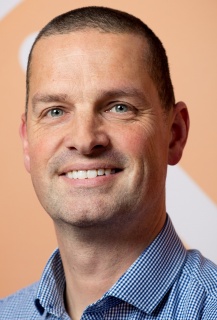
René van Veldhuijzen
Squerist, NetherlandsRené van Veldhuijzen is the Principal Test Automation Specialist for Squerist. He started Software Testing in 1998 working for Sogeti Netherlands, teaching TMap Next when it came out (two rooms down the hall) to about 400 starting professionals, learned some managerial skills as an Oracle Alliance and Competence Manager, before returning to his real passion...Software Testing, ranging from Test Management to Test Automation (as an ISTQB-CTAL Test Automation Engineer, using tools like Oracle ATS, HP ALM, Selenium and Tricentis Tosca). He came into Software Testing as a registered Nurse, which helped him perform as a coach and mentor to many people and to this day he combines his days as a software test specialist with teaching, coaching and training.
Besides the principal TA Specialist, he is also responsible for a team of specialists in the SouthWest region of the Netherlands (covering cities like Rotterdam, Dordrecht, Gouda and Vlissingen) and is partnermanager with Tricentis and Parasoft.
Forget Shift Left and Shift Right. Let’s Shift Back !!
Many Test Automation efforts these days are still struggling or horribly failing because they started the wrong way. At the start of a Test Automation implementation, two things are imperative: start with the “Why” and build a solid Architecture.
Together we will explore the aspects under the “Why”: which discussions must be avoided, and which decisions will have to be taken at the start of any Test Automation implementation. After many workshops with his customers Rene spotted four definitive categories: the technical aspects, important organizational aspects, test aspects (obviously) and indispensable preconditions.
Now that we are clear on why it is going to be used, we can zoom in on building a reusable and solid architecture for Test Automation. There is the way the lovely people from ISTQB see it and there is Rene’s practical solution on what Test Automation Architecture is, how you set it up, maintain it and how you make sure the Architecture is useful.
This talk is based on multiple workshops done at various leading Dutch companies, were Rene explains the approach to applying the test automation architecture to new and existing test automation efforts.
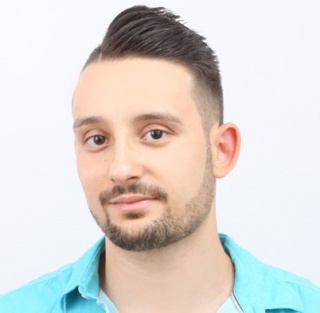
Anton Angelov
Automate The Planet Ltd, BulgariaAnton Angelov is CTO of Automate The Planet. He helps people to write high-quality and maintainable test automation. His passions are automation testing and designing test harness and tools, having the best industry development practices in mind. He consults companies regarding improving test automation practices and is the lead developer of the SaaS test automation framework BELLATRIX. He was nominated for best QA in Bulgaria for 2017, 2018 and 2019.
How to Test the Test Automation Framework?
Nowadays, more and more companies are building test automation frameworks based on WebDriver and Appium to test their web and mobile projects. A big part of why there are so many flaky tests is that we don't treat our tests as production code. Moreover, we don't treat our framework as a product. In the talk, you will see examples of how you can automate the testing of your test automation framework and be sure that it is highly reliable. You can get lots of ideas for various types of tests such as learning tests verifying that 3rd party dependencies are not breaking the code, compatibility tests checking that the UI components are working for each mobile control on each OS, cross-platform verifications for testing whether everything is working on multiple OS. Sample test environments for the storing different distributions of the framework packages will be presented.

Andrei Vadan
Cognizant SoftVision, RomaniaAndrei Vadan is a Quality Assurance Automation Engineer that has more than 6 years of experience. He is specialized in mobile apps, has knowledge about web and desktop projects and operating systems.
His experience spans throughout various technology solutions focusing on faster and more reliable testing processes to ease the work efforts for both developers and quality assurance engineers. This comes after working on several projects on different platforms and technologies.
Andrei loves to take walks in the countryside in his free time, as well as travelling and discovering different cultures. Other than this he also likes cars and good wine.
Custom UI automated testing with QA Engineer in mind
First, Andrei will be starting with a definition of automation, continuing with the benefits, and then finally how can this be done and how to provide fast results.
Automation uses scripted sequences that are executed by testing tools. Those tools can be done by a 3rd party or built inside the organisation. Over the years Andrei understood the importance of making a team with QA engineers and developers. On the project that he is currently working on, together with his team they designed a reliable solution, very easy to use and they tried applying it to new projects. It works because everyone in the team listens, cooperates, appreciates feedback and tries to think at a larger scale.
Team members are very important because they are the ones that are going to use the tool, so their feedback is essential in making it better and easier to use. Together, Andrei believes, any team can build a better framework.

Matthias Ratert
PROGNOST Systems GmbH, GermanyMatthias Ratert is an experienced testing professional with more than 20 years of experience in software development and testing. Currently Matthias leads the Hardware, Embedded SW and Testing Team at PROGNOST GmbH, Germany. Before he has worked for Nokia, Visteon (automotive), Teleca (mobile communications) and Secusmart GmbH (encrypted mobile communications). Matthias has spoken 3 times at EuroSTAR (2009, 2012 and 2015), 2 times at the Agile Testing Days (2010, 2016) and the TestCon Vilnius (2017).
Champions League SW Test Automation - 11 key players we’ve nominated for our team
When taking over the responsibility for my current test automation project we found “11 key players” to be nominated for our test automation team to get it up and running – and to be able to play in the Champions League!
The presentation shows how to set up the defense of the test automation system to have it simple, robust, maintainable and always up and running. The midfield makes it effective, adoptable and understandable. And Test Automation has to be offensive – I will show how.
Following these rules, our own team will be world-class. However, the “opponents” of test automation also have good players. So how to detect attack attempts and how to block them?
Finally our “course of the match” is presented: What has happened before the kickoff, during the 1st and 2nd half time and in the extra time?
All the 11 key players and the opponents are presented with anecdotes and are proven with the practical background of our test automation framework.
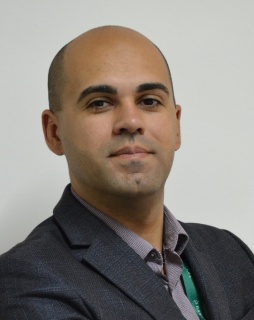
Gjore Zaharchev
Seavus, North MacedoniaGjore Zaharchev is an Agile Evangelist and Heuristic Testing fighter with more than 12 years of experience in Automated, Manual and also Performance Software Testing for various domains and clients. In this period Gjore has lead and managed QA people and QA teams from different locations in Europe and USA and different team sizes. He recognizes testers as people with various problem-solving skills and an engineering mindset and believes that Software Testers are more than mere numbers to clients. Currently working at Seavus, with an official title of a Quality Assurance Coordinator responsible for the Software Testing Team. In addition, he is an active speaker on several conferences and events in Europe and Testing Coach at SEDC academy in Skopje.
Cheat sheets are finally legal
Are you tired of documenting the same things over and over again and spending too much time preparing documentation instead of focusing on testing? Are you interested in just improving the test ideas instead of reinventing them constantly? Cheat sheets are finally legal and there is now a benefit of their use. Use some of the existing available Cheat sheets or just develop your own.
Developing test cases and wasting precious time should stay in the past and more intensive testing should be achieved. Test Cases are dead... Long Live the Cheat sheets!
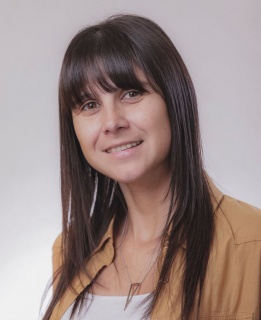
Nadia Cavalleri
BoundLess, ArgentinaNadia lives in Buenos Aires. She is an Information Systems Engineer and Psychologist. She obtained IBM - Rational Functional Tester for Java Scripting certification. Nadia has been working in Testing for more than 12 years. She is the co-founder of BoundLess where she works as Operation and Quality Manger. She is also founder of Argentesting, the Argentinian testing congress. She often writes for magazines and gives talks in international conferences. She teaches at schools, universities, and companies. Nadia has a YouTube channel and also has a blog. She was the south American Judge at the Software Testing World Cup.
Testing applications for children
Testing applications for children is very different from testing applications for adults. We have to consider more aspects and we have to focus on other quality attributes. One of the reasons is that children are still in the process of development, so their abilities are not comparable with ours. They write more slowly, most of them do not read, they have little precision in the use of the mouse, etc. As a result, the testing of this type of applications requires focusing on certain aspects that we are not used to considering when we are testing applications for adults. But there is an additional complexity. Not all children are in the same development stage. A 2 year-old child is very different from another 7 years-old child. The challenge here is developing and testing a software whose users cannot or do not know how to do the same things. For example, not all of them read at the same level. In fact, not everyone can read. Our system should be able to support all this heterogeneity of users. Of course, all of this affects the testing strategy. In this talk we will see how all this impacts in the testing process and why mobile, performance, usability and accessibility testing become more important.
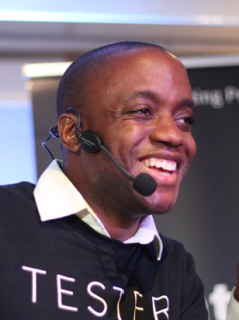
Ronald Cummings-John
Global App Testing, UKRonald Cummings-John has spent years building companies and writing software. After selling his first startup, he’s now scaling up Global App Testing – a VC backed crowdsourced testing platform with over 20,000 professional testers globally, which was selected as one of the fastest growing technology companies in the United Kingdom.
Ronald Cummings-John is also the author of the definitive book on testing, Leading Quality: What QAOps teaches you about delivering great software and accelerating growth. His passion for quality assurance (QA) has sent him around the world working with the top QA and product teams from companies such as Facebook, Microsoft, King.com, Spotify, Dropbox and many more.
Leading Quality: Lessons learned about delivering great software from the fastest growing tech companies in the world
It’s never been more important to deliver high-quality products that customers can’t get enough of.
Companies can no longer think about quality in the traditional sense – the days of relying on testers to be the gatekeepers of a release and own “quality” are over. Organisations that continue to follow this line of thinking are increasingly out of touch and risk releasing buggy products to market and putting their brand’s reputation on the line.
For those who get it, quality has become everyone’s responsibility.
Adopting a culture that embraces quality allows organisations to develop better quality products, achieve alignment between teams and deliver world-class customer experiences.
In this talk, Ronald shares the traits of high-performing teams and insights from working with and interviewing the fastest growing app companies in the world like Facebook, Snapchat, Google, Spotify and more.
In this talk, he will cover three key themes:
1. How internalising quality led to these companies building better products
2. What modern testing strategies they adopted and the decisions they made across their infrastructure to accelerate their development speed
3. How they connected testing activities to the metrics that matter and drove business growth
He will share examples and stories from his forthcoming book: “Leading Quality: What QAOps teaches you about delivering great software and accelerating growth” to leave the audience with actionable takeaways.

Vasilis Petrou
Intrasoft International, GreeceVasilis works at Intrasoft International as a Test Automation Leader. After 10 years of working as a full-stack developer, 4 years ago, he discovered Software Testing & Test Automation and the change in career came naturally, because software quality assurance was always his first concern. As a test automation enthusiast he co-founded the Software Testing Meetup in his town, Thessaloniki, pursuing the sharing of Test Automation Tips and Tricks. Additionally he organizes lectures in Universities and Institutions about Software Testing and Test Automation, so that students are aware of this career choice. At Intrasoft International he works for the Software Testing Services Center, an independent department that the company has, and is specialized in software testing. From his position, he helps teams to organize test automation solutions, continuous testing, mentoring colleagues and supporting demanding deliveries and developing test automation playgrounds for those who want to practice.
Testing Web Services, with an Object-Oriented way
Writing test scripts with SoapUI Open Source to test web services, it is common to clone steps and re-use them, having a project full of duplications and hard to maintain. Wouldn’t it be nice if there were objects to instantiate and call their methods from every step that is needed, with an easy way? It does not have to do with the tool, but how we use it. After implementing thousands of test cases and many test project structures, it is time for our lesson learnt to take place.
In this talk Vasilis will present you with a full structure of a SoapUI Service Test Project with an Object-Oriented way. Additionally, he will show you a comparison between the implementation based on Object-Oriented programming and the implementation based on test step cloning. The conclusion is yours to make.
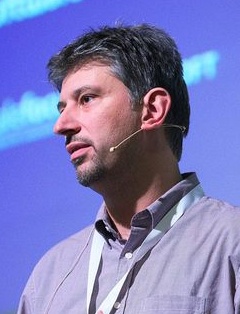
Georgi Rusev
iFao an Amadeus, BulgariaGeorgi Rusev has more than 20 years of professional experience in the Software industry as test automation engineer and manager. He has helped companies like Sciant, VMware, Experian, Naxex and iFAO establish solid processes around automation of the testing activities. His experience ranges from software for virtualization, software modeling tools and security gateways to business applications in travel, trading and credit scoring. During the years he has taken part in a series of initiatives to promote and establish the software testing profession in Bulgaria: Program Committee Participant in SEETEST, initiator and board member of ISTA conference and others.
Layered test automation for Selenium WebDriver projects
The advancement of JavaScript, along with the requirements for responsive UI design triggers the creation of intricate and complex UIs with advanced controls and interactions.
Selenium WebDriver, which has been designed long ago is still a first choice for building test automation for many projects. However, library functionality out of the box is not enough to meet the challenges posed by modern UIs and using only its functionality would not allow building test automation that can last for many releases.
The presentation would focus on a way to move the abstraction up - from manipulating a single HTML element with WebDriver directly, to building an actual abstraction of your visual control(S). Modern UI controls are usually far more complex and consist of several elements glued with JavaScript working together. This would allow building components of elements, increasing the ammount of work for the test engineer on the backround, while minimizing code and improving its maintainability.
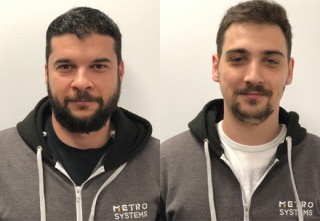
Dragos Tanta & Alexandru Chelaru
Metro Systems, RomaniaDragos Țanţa is a Test Automation Engineer at Metro Systems Romania, where he specializes in test automation strategies and techniques. Dragos has over 13 years of experience in the software testing field, where he has worked with multiple technologies. Having a passion for quality, he loves teaching and coaching others into expanding their software testing abilities.
Alexandru Chelaru is a Test Automation Engineer at Metro Systems Romania, where he works on building test automation frameworks using various technologies. With almost a decade of experience in IT, his current focus is on implementing continuous testing as part of continuous delivery pipeline. He is passionate about IoT and test automation infrastructure as a service.
Consumer Driven Contracts – The missing link in Agile Testing Pyramid
The current trend in software development forces the quality assurance engineers to keep up with new tools, processes and testing types.
Performing integration testing in a microservice architecture, especially in a system of systems, will challenge any testing strategy. How can we adapt the QA strategy to respond to this level of complexity?
Consumer Driven Contracts come to complete the Agile testing pyramid and to help on testing the microservice integration part.
We will introduce you to the benefits of Consumer Driven Contracts, and how to start implementing it in your project.

Milovan Pocek
Execom, SerbiaMilovan Pocek has been a Software Tester at Execom for more than three years. Showing good technical skills, Milovan is highly interested in test automation. He has worked on various software projects and performed system, integration, acceptance, regression and functional testing using both automated and manual testing methods. Lately, he is mostly working on projects that are hosted on the cloud, so he is very interested in cloud testing.
Introduction to testing AWS solutions
More and more information systems are transferred from on-premises architecture to the cloud, so the need for testing cloud solutions is rising rapidly. The serverless approach covers a vast majority of performance and maintenance factors, but there are many challenges in testing cloud solutions, particularly testing related to the business logic. Considering the fact that Amazon is the world’s biggest cloud provider, in this presentation I will share my experience of testing AWS solutions and try to provide answers to the following questions:
In addition, I will provide a quick overview of the set of services used on our AWS project.
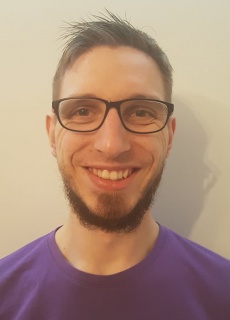
Andrzej Doliński
Cognifide, PolandAndrzej is a Senior QA Engineer with over five years of experience. He started as an intern in an American company, Wikia (currently Fandom), testing mobile applications. For over four years Andrzej has been working in a Polish-British company, Cognifide, where he is responsible for manual and automated tests and also for the technical part of the recruitment process. He is also the founder of one of the Polish meetups - DebatQA.
Session based testing and shift left approach as a way to improve quality in a project
With his presentation Andrzej will show how to create responsibility for the quality in the whole team, preventing bugs, integrating the team and sharing knowledge about how to test. To achieve that he will present a shift-left approach, which is the answer for the need of delivering faster while keeping a high quality of the application.
During the presentation he will also speak about Session Based Testing as a natural extension of the mentioned approach and evidence of completed work. During the early phases of software development it can be used in QA Hug and QA Demo to collect test data, describe automation scope or collect notes from pairing Developer and QA.
All of this is presented as a summary of already successfully delivered projects. So come and listen to how shift-left and session based testing works in practice and how they can be combined into one process.

Jeroen Rosink
Squerist, NetherlandsJeroen is a passionate test professional with about 21 years of experience in testing, test management and executing, coordinating, coaching and advising roles. Driven by his passion he always seeks the things that make testing valuable and interesting. Besides presenting several times on the Dutch TestNet conferences, he also gave presentations and/or workshops on SEETEST 2017, SEETEST 2018, TestCon 2018 Vilnius, TestCon 2019 Moscow, QA Expo 2019 Madrid. Also he made his contributions to an anniversary book of TestNet “Set your course: Future and trends in testing” (translated from Dutch) and the book “How to reduce the cost of software testing”.
Tester! Plan your ride to the moon.
Shift left and shift right already became familiar to us. Now it is time to shift up!
Over the last few years people have spoken about cognitive biases. Who hasn’t seen the movie with the gorilla explaining unintentional blindness? How can this way of observing things help us become better testers? By helping you not miss that bug.
To understand what is happening now we have to be aware what these technologies like IOT, AI, ML, Mobile Apps, Business Intelligence, Big Data, Blockchain are. During the presentation Jeroen provides a short view of these technologies and how they impact testing. To understand the possible impact of these technologies on each other we take a ride to the moon.
Each possible technology has impacted our way of testing. As testers we have to be aware how we have to adjust our skills. What will happen when we combine AI with Big data, and what skills are needed? What can possibly go wrong and can we survive in a world focused on fast delivery? Jeroen will explain that history repeats itself, the main idea is data will make a difference created and used by those technologies.
At the end we come back to earth and are aware how to survive in a world that is changing.
Who survives the moon will have more knowledge on how to live on earth and will be able to add value to the organizations of the future.
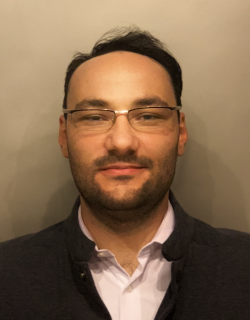
Serban Bejan
Euro-Testing Software Solutions, RomaniaInformation Security Consultant at Euro-Testing Software Solutions. He has 5+ years of experience in tech including Offensive Technical Cyber Security Services, Application Security, DevSecOps and Static Code Analysis. His primary research interest is in Web Applications Security.
RPA for security software testing automation
RPA is changing the way IT works and software testing automation is the next area that will be shaken by robots. RPA’s technology provided and continues to provide significant advantages over more elementary automation tools as being code-free and non-disruptive.
RPA can power business testing, and that can affect the amount of testing done by the professional testing team including security testing. Some testers might have to rearrange their work when RPA powers the business testers to do more.
This presentation provides detailed examples on using UiPath for automatization of security testing web applications. Our proof-of-concept framework for security testing performed well in the tests on DVWA, XVWA, proving RPA’s potential in QA testing and even in security testing for some niche cases.
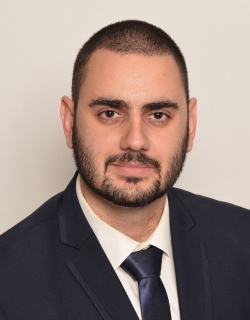
Aleksandar Zeljković
Bridgewater Labs, SerbiaQuality/Test engineer with broad experience in a variety of software domains and setups. Inspecting and adapting both product and process, pushing the software quality forward, no matter the circumstances.
(Testing) Expectations VS (Augmented) Reality
Those SciFi, futuristic glasses are finally here! We can see how the furniture would fit our empty living room, surgeons can see the bloodstream before they make a cut and kids are chasing some invisible creatures. From a user perspective, the UX has evolved to a whole new level and endless opportunities are here. From a tester perspective, things are not so bright. The tester doesn’t know what to test, he cannot write Selenium tests for his AR and he hit his toe on a piece of furniture while he was trying to break his app. But don’t be afraid, someone already has had all of these issues and he can help you to overcome this frustration.
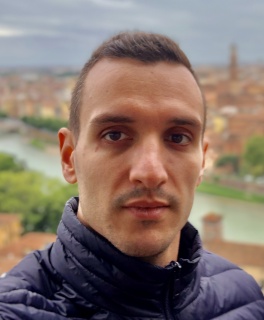
Dimitar Todorov
Progress, BulgariaDimitar has been testing software for more than 7 years now, worked on different projects and cloud platforms for mobile application development. He is currently working at a NativeScript team as a Senior Automation QA engineer. Continuous Integration, performance testing and automation are some of his passions, and he has experience in every aspect of software testing. He is certified with almost all of the ISTQB certificates and mobile application testing is his latest crush. For him, working in a fast growing community like mobile application development is really exciting, challenging and last but not least - a lot of fun. Dimitar shares he is a ski lover and a hobby traveler - he likes crossing borders and visiting different ski resorts, as well as tasting local food and beer.
OpenSource Mobile Automation in the cloud with Appium and TravisCI
Mobile application testing is crucial for today’s software development market, since almost every enterprise wants to develop and deliver first class mobile apps. Providing an open source platform for developing native applications with single code base is something great and delightful but it is also very responsible. There is no place for compromises and the quality of the framework is our top priority. Testing the framework requires a lot of mobile applications, developed with different frameworks to be verified on a lot of mobile devices. As the effort scales the automation comes in to help. In this session, Dimitar will show one of his approaches to transparent CI testing of mobile apps in the cloud with zero local infrastructure, using popular services like TravisCI, SauceLab and GitHub.
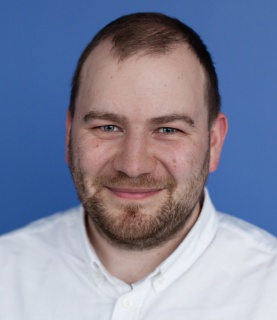
Michal Buczko
SyproSoft Solutions, PolandMichal‘s „Business as Usual” is varied and exciting. He works at SyproSoft Solutions where he advocates for great and efficient testing. He gives insight in the design of the test harness and solutions for customer cases, the definition of the scope of testing, and works with Security Community of Testers. He tries to be the one responsible for sharing „new-fancy stuff” with others and helping people grow as individuals. He is involved in various activities including testing, security, business analysis and has taken a step into the world of the Product Owner, and is now sharing his experience as a Consultant.
Building an Ethically Strong Organization, with the important role of QAs
Ethics and integrity are becoming more and more important. You can make a major impact on your project outcome and relationship with end customers by ensuring that employees understand the appropriate ways to address daily ethical issues. While an absence of ethics can put companies into a spiral of scandal, firm and consistent ethical approaches can help companies save their products and projects. Ethical issues affect IT products and software houses delivering projects as much as manufacturing organizations. Practices like stakeholder’s management and effective delivery will not save you from ethical short cuts in delivery.
Michał proposes that the QA department must play a strong role. It is the first place in an organisation where it builds the quality image of the produced software, and where people share the reports and outcomes with stakeholders. They make a lot of hard and impactful decisions, and have to be constantly vigilant to help their companies set the stage for ethical behavior. This is a session for all the testers and test managers about why their ethical spine and integrity is important for their company and department success.
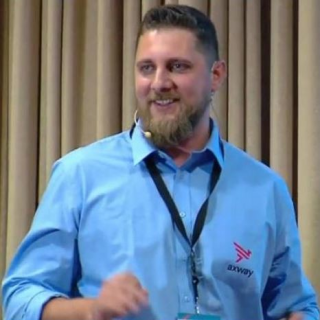
Victor Ionascu
Axway, RomaniaHe's passionate about testing for more than 12 years and was involved in extra activities like:
• Continental Judge for Software testing world cup in 2016
• Testing camp speaker
• Organizer of internal testing workshops
He has CAT & ISQTB certifications that helped him organize the activity in his teams, with strong focus on Agile and testing parts. He has advanced step by step in his career, from QA , to QA lead, to QA manager, Project manager & Scrum master.
AGILE System Testing Using a Delivery Train
This presentation is a case study about implementing System testing using AGILE methodologies in a corporate environment, together with its challenges and lessons learned; most of the time , this sounds like Mission impossible , with all the movie versions, but without Tom Cruise.
What we did:
We took piece by piece the products included in the customer solution and aligned them into a delivery train. The catch was in convincing the team to support and “buy into” this way of working and to bring visibility in each step of the process (train station). Creating the train, revealed a lot of process misunderstandings , different tools which were not compatible and that were bringing overhead to teams backlog.
We did fail several times in:
• finding the right sponsors,
• showing essential relevant things to the teams or products owners
• implementing testing techniques using Agile
• synergizing a multinational working team ( France-Bulgaria-Romania)
Due to these, at some point we were on the verge of closing the Delivery train or at least to stop investing in it. The ice breaker happened when we had 2 scenarios implemented that took automatically the latest release and found a blocker that passed product borders. Today, the system has a sexy dashboard, easy to be understood by everyone, it is integrated in Jenkins & Jira and has runs at every product release with 8 big scenarios put in place. That’s what we call success story, after all the struggle.

